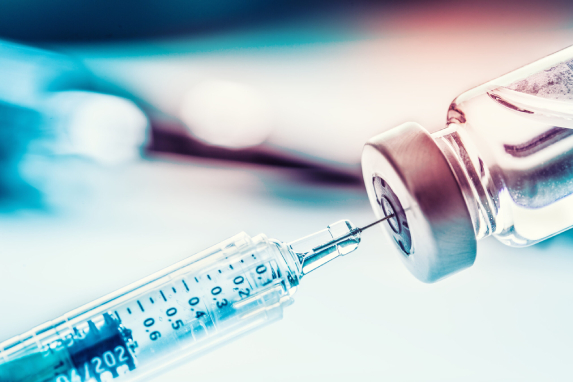
IV Drugs
About IV Drug Addiction
What Are IV Drugs?
IV drugs refer to substances that are administered directly into the bloodstream through a vein. This method of drug administration allows for rapid absorption and immediate effects. IV drugs are typically used in medical settings, such as hospitals and clinics, to deliver medications or treatments directly into the patient’s bloodstream. However, outside of medical contexts, some individuals engage in illicit IV drug use. In these cases, people inject various substances, such as opioids, stimulants, or sedatives, into their veins using needles and syringes. While the reasons for non-medical IV drug use can vary, it is often associated with the desire for rapid and intensified effects.
Commonly Used IV Drugs
These drugs have a significant potential for addiction, health complications, and even fatal overdoses. Here is a list of some commonly used IV drugs:
- Heroin
- Cocaine
- Methamphetamine
- Fentanyl
- Ketamine
- Bath Salts
- Etc…
Why Individuals Turn To IV Drug Use
People turn to IV drug use for various reasons, some of which include the swift and intense impact that injecting drugs can have on the body. When drugs are injected directly into the veins, they rapidly reach the brain, producing a more immediate and powerful high compared to other routes of administration. This immediate and intense effect can be appealing to individuals seeking a rapid and intense high.
Additionally, injecting drugs can offer a sense of control and precision over the dosage. By injecting, users can carefully measure the amount of the drug they want to consume and have a more accurate idea of the potency. This precision is desirable for those needing a specific level of intoxication or individuals with high tolerance levels.
Moreover, the ritualistic aspect of preparing and injecting drugs can also be a significant factor. The process of preparing the substance, finding a vein, and injecting it can create a ritual that provides a sense of immediate gratification and can become a part of the addiction cycle.
It is important to note that the reasons for injecting drugs are complex and often related to individual circumstances, addiction, and personal experiences. Understanding these motivations is crucial for developing effective harm-reduction strategies and providing appropriate support for individuals struggling with addiction.
The Dangers Of IV Drug Use
One of the gravest dangers associated with this form of drug administration is the increased risk of overdose. When drugs are injected directly into the bloodstream, they bypass the body’s natural filtration systems and enter the bloodstream rapidly. This rapid absorption can lead to a higher concentration of the substance in the body, making it more difficult to control the dosage and increasing the likelihood of an overdose. Additionally, the use of contaminated needles or unsanitary injecting practices can lead to infections, abscesses, and the transmission of blood-borne diseases such as HIV and hepatitis C. IV drug use also poses a risk of damage to veins, as repeated injections can cause vein collapse, scarring, and thrombosis. Moreover, once someone develops a dependency on IV drugs, the cravings and withdrawal symptoms can be intense, leading to a cycle of increasing drug use and an even greater risk of overdose.
How To Acknowledge IV Drug Use
Acknowledging that a loved one is abusing drugs can be a challenging process on its own, but the difficulty escalates when it comes to acknowledging the specific ways in which they are abusing them. Sometimes, the signs of drug abuse can be subtle or easily overlooked, especially when it involves IV drugs. However, there are certain indicators that can help identify if a loved one is abusing IV drugs. Physical signs such as unexplained needle marks on their arms or other discreet areas, frequent infections or abscesses, sudden weight loss, and track marks on their veins may be observed. Behavioral changes like secretive behavior, withdrawal from social activities, financial difficulties, and neglecting personal hygiene are also red flags. Furthermore, finding drug paraphernalia such as needles, spoons, or empty vials in their personal belongings may serve as evidence. If you suspect a loved one of abusing IV drugs, it is crucial to approach the situation with empathy and understanding, while also encouraging open communication and the pursuit of professional help.
IV Drug Addiction Recovery
IV drug addiction recovery is often regarded as one of the most challenging journeys one can embark upon. The dependence on intravenous drugs can consume a person’s life, wreaking havoc on their physical, mental, and emotional well-being. However, despite the immense difficulties involved, it is crucial to recognize that recovery from IV drug addiction is indeed possible. It demands tremendous perseverance, unwavering commitment, and a strong support system. The path to recovery may be fraught with setbacks and obstacles, but with the right professional recourses, guidance, and determination, individuals can reclaim their lives from IV drug addiction. By embracing comprehensive treatment approaches, such as detoxification, counseling, therapy, and support groups, those struggling with IV drug addiction can gradually rebuild their physical health, regain control over their thoughts and emotions, and ultimately, find hope and purpose in life again. No matter how difficult the journey may seem, recovery from IV drug addiction is attainable, offering individuals the chance to embark on a new chapter filled with healing, personal growth, and lasting sobriety.















